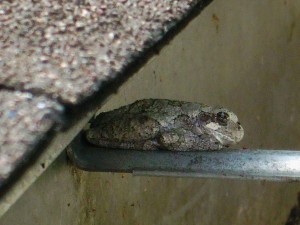Book Review “Bringing Nature Home”
by Douglas W. Tallamy
Bringing Nature Home
…How Native Plants Sustain Wildlife in Our Gardens
By Douglas W. Tallamy
Bringing Nature Home …How Native Plants Sustain Wildlife in Our Gardens, Douglas W. Tallamy, Timber Press, Portland, Or; Copyright 2077; 272 pages. Reviewed by Kenneth Wilson “The Gardening Whisperer”.
This review is prepared to be on www.Gadeneningwhisperer.com
“Doug Tallamy is currently professor and chair of the department of entomology and wildlife ecology at the University of Delaware in Newark, Delaware, where he has taught insect taxonomy, behavioral ecology, and other subjects. Chief among his research goals is to better understand the many ways insects interact with plants and how such interactions determine the diversity of animal communities. He has also written a book with Rick Darke, “The Living Landscape”: It is about designing for Beauty and Biodiversity in the Home Garden.” by Timber Press.
“Doug won the Silver Medal from the Garden Writer’s Association for his book, Bringing Nature Home.”
 In the book “Bringing Nature Home” Mr. Tallamy builds the case that insects are the key to all other plant life in an ecosystem and that their mass diversity helps sustain the balance. As part of a food chain, these insects move biomass through the system, therefore, giving others something to eat and survive. He states that it is only native plants that these insects survive on and the removal of native plants and the replacement of alien plant forms disrupt this process. His hope is that more natives will be used in more home plantings which will restore the ecosystem, therefore, bring back more of the native species of animals that feed on these insects.
In the book “Bringing Nature Home” Mr. Tallamy builds the case that insects are the key to all other plant life in an ecosystem and that their mass diversity helps sustain the balance. As part of a food chain, these insects move biomass through the system, therefore, giving others something to eat and survive. He states that it is only native plants that these insects survive on and the removal of native plants and the replacement of alien plant forms disrupt this process. His hope is that more natives will be used in more home plantings which will restore the ecosystem, therefore, bring back more of the native species of animals that feed on these insects.
In the first part of the book, Tallamy gives several examples of plants and insects that are alien to the United States and how they have disrupted the balance in a given ecosystem. Tallamy also tells why and how insects cannot eat alien plants. If an alien plant has no checks by insects it will take over an area forcing out native plants.
Tallamy states that their chemicals in native plants that certain insects need to survive and they pass these chemicals along to other animals up the food chain. Passing these chemicals along with forms a food chain that keeps the ecosystem stable and healthy.
In the back portion of the book, Tallamy provides a list of insects and what plants they survive on. There are insects herbivores that eat plants and their insects that eat insects carnivores these keep those fast-growing insects in check. The back chapter has a list of native plants and how many species live on given known genera of plants consequently giving a good idea which plants will give the best diversity. Along with this Tallamy gives a helpful list of native plants to be grown in specific regions of the United States.
It is a must-read book if you love wildlife in your back yard. I feel that this is only the tip of the problem with diversity as when indigenous lands are stripped of their soils that are built up from ages of broken-down rubbish deposited from year’s plant debris. When you remove the soil organisms that help native plants to survive it makes it difficult to reestablish some native plants. Tallamy examples of restoring natives are from ten (10) acre plots in Delaware. It is much more difficult in the area of .25 acre lots where neighbors do not hold the same values for nature. The key to his whole theory is the diversity of insects living on native plants. One or two plants per small urban lots are not enough to change the ecosystem there must be large strips of native areas to keep the diversity alive and help the ecosystem.
©Ken Wilson Gardening Whisperer 2015
This entry was posted in Book Reviews and tagged Alien Plants, Diversity, Ecosystems, Insects, Native, native plants. on May 18, 2015, by Ken Wilson. Edit



 In the book “Bringing Nature Home” Mr. Tallamy builds the case that insects are the key to all other plant life in an ecosystem and that their mass diversity helps sustain the balance. As part of a food chain, these insects move biomass through the system, therefore, giving others something to eat and survive. He states that it is only native plants that these insects survive on and the removal of native plants and the replacement of alien plant forms disrupt this process. His hope is that more natives will be used in more home plantings which will restore the ecosystem, therefore, bring back more of the native species of animals that feed on these insects.
In the book “Bringing Nature Home” Mr. Tallamy builds the case that insects are the key to all other plant life in an ecosystem and that their mass diversity helps sustain the balance. As part of a food chain, these insects move biomass through the system, therefore, giving others something to eat and survive. He states that it is only native plants that these insects survive on and the removal of native plants and the replacement of alien plant forms disrupt this process. His hope is that more natives will be used in more home plantings which will restore the ecosystem, therefore, bring back more of the native species of animals that feed on these insects.